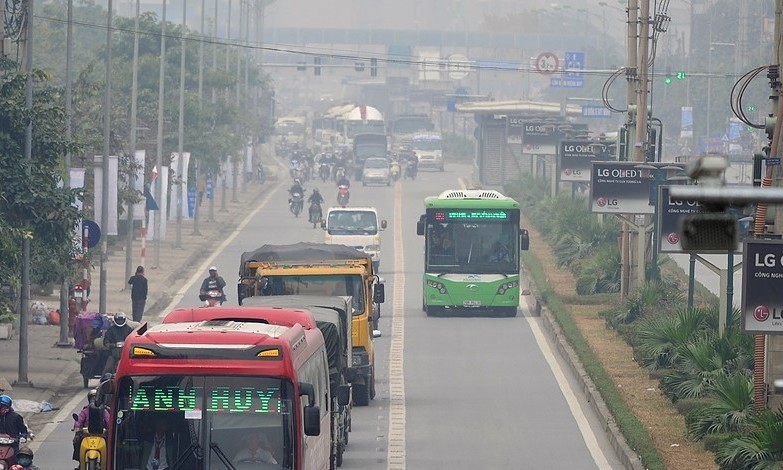BRT has become a hot topic on social media, newspaper and even during chit-chat at roadside tea shops in recent days. Praise was scarce, criticism was common and doubt was ubiquitous. Many even consider buses as the culprit of traffic jams.
In contrast to public opinion, scientific studies tell a different story. A few days before BRT was piloted, Professor Shinichi Mochizuki from Japan, said during a presentation about pedestrian spaces around the world that on the same road, if private vehicles and public transport are combined, the efficiency of that road will be much higher than when only private vehicles are used. In addition, private vehicles occupy large parking spaces. That is why all advanced countries have developed public transport systems. But why are so many Vietnamese people doubtful about the operation of BRT buses?
It is easy to notice that words of criticism or doubt are highly sentimental. However if we look at the traffic congestion situation in Hanoi in the past 10 years, we can partially understand the sentiment of a large proportion of the public against BRT. First, it is because there used to be strongly worded slogans invented along with some measures to deal with road congestion.
Except for some regarded as decent, such as building lightweight flyovers at important junctions, other measures such as erecting lane dividers still resonate as a symbol of wastefulness. A huge sum of money had been spent but then the dividers would soon be removed.
What’s more, he scheme to change working and schooling hours in central districts made both students and their parents more tired when high school and university students were locked in until 7pm. The duration of congestion on some roads was longer than usual because students left school at later hours. Three weeks later, work and school hours were returned to normal.
One measure that everyone thinks is as easy as pie is returning pavement spaces to pedestrians, but that has never been taken seriously. Even at the streets near the offices of administration agencies, motorbikes are still parked on the pavement. Motorbike and car parking services have not been placed under supervision and users are often overcharged. During the holidays, it has become normal for people to be charged up to VND50,000 (US$2.2) to park their motorbikes.
The underlying cause is bad planning. Everyone knows that the transport sector alone cannot reduce traffic congestion if the population continues to rise. Limiting high-rise buildings and residents in downtown areas has been mentioned by many experts and even put into policies. But what we see is in stark contrast. High-rise buildings are still rising, Hanoi’s population is skyrocketing, mainly concentrated in the city centre and satellite cities have been planned but are yet to appear.
The root of the doubt over BRT lies in the fact that the public’s confidence has been undermined for years and Hanoi’s traffic situation has seen little improvement. The people do not care about reports about the shrinking number of congested places. What they see most clearly is that the time to travel between any two sites in the city centre is increasing.
Whether BRT can succeed or not does not depend entirely on the transport sector. It needs public support and participation. Only when road users leave their cars and motorbikes and turn to buses, scientific studies on the advantages of public transport can it become a reality.
Concerning the public’s confidence, BRT is an opportunity for competent authorities to demonstrate that their proposals will be enforced in a serious and scientific manner. In addition to ensuring that buses are on time and safe, it is necessary to make the bus system more convenient.
Shinichi Mochizuki tells a story in France that when some cities decided to give priority to bicycles and buses, in the first place they met with strong resistance from the public. Car users looked at the spacious lanes for bicycles and buses with envy. But finally they left their cars and travelled by bus because it was more convenient.
In addition, it is necessary for law enforcement agencies to crack down on simple issues such as pavement occupation and overpriced parking fees to restore the public’s confidence. Once confidence is restored, compliance with new policies will follow naturally.
















